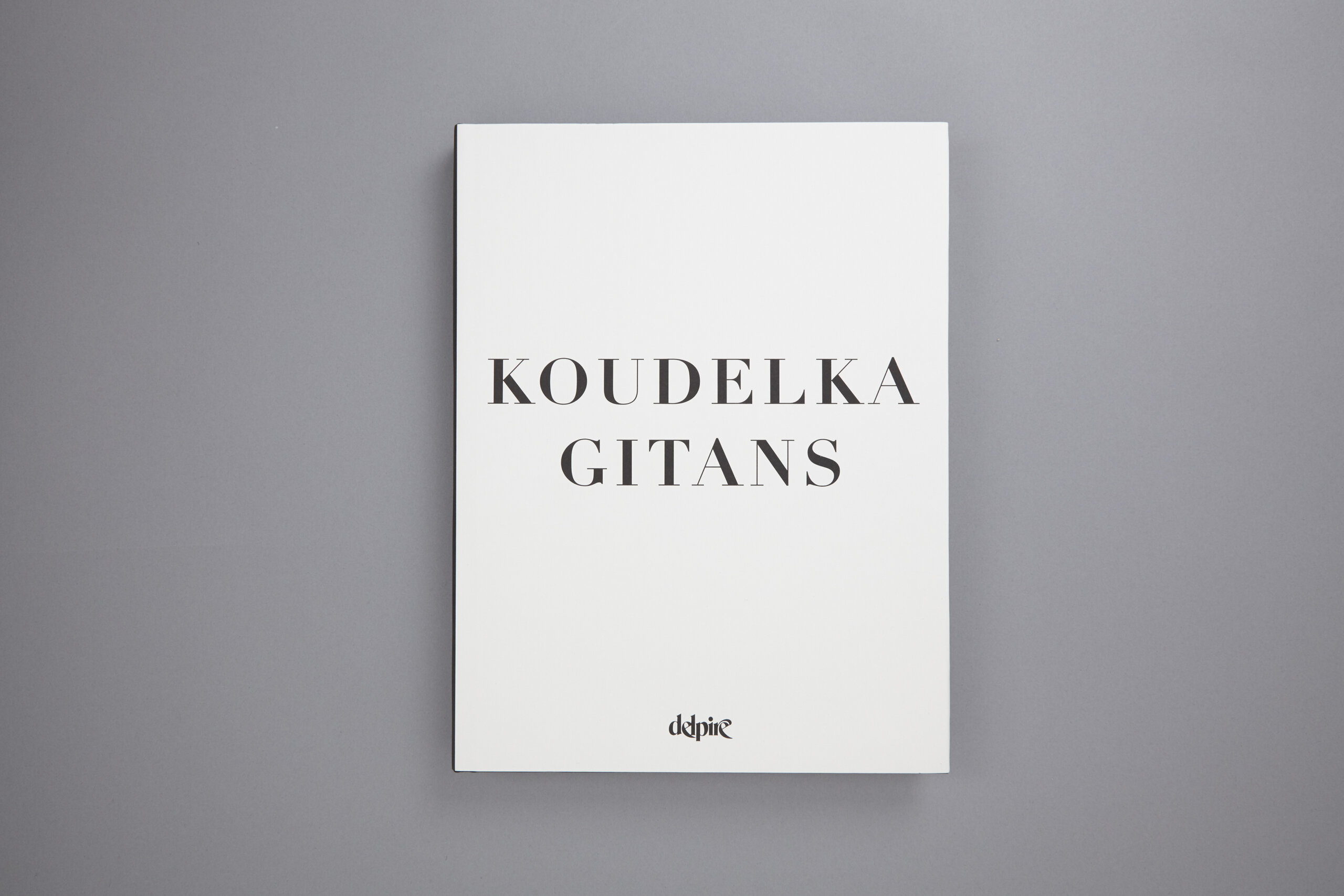
Gitans
55,00€



In stock
Standard delivery 3 to 7 days
Publication date : 2021/11/25
96 pages, 210 x 250 mm
58 black and white photographs
Softcover with flaps
Text by Tomáš Pospěch
Design concept by Aleš Najbrt and Josef Koudelka
Design : Studio Najbrt, Prague.
Language : French and English
ISBN 9791095821403
“Moving among the actors on set, I was able to take the same scene, multiple times, but differently. It taught me how to get the most out of a given situation, and I have continued to apply this method to my work.”
Josef Koudelka*
delpire & co is pleased to publish Koudelka Theater, a presentation of 58 newly edited photographs by the photographer, accompanied by a text by photography historian Tomáš Pospěch.
In his own words, Josef Koudelka was not particularly interested in theatre in his youth. When he arrived in Prague from his Moravian village in the late 1950s, his focus was on his studies. His interests were airplanes, folk music, and photography, which he practiced as an amateur. A classmate recommended that he meet his uncle, who worked in the editorial staff of the magazine Divadlo (Theatre), then looking for a photographer. It was in this context that Josef Koudelka, soon to become an aeronautical engineer by profession, became a theatre photographer.
In the 1960s, Prague theatres were one of the rare places in Soviet Czechoslovakia where relative freedom of expression continued. The playwright and essayist Vaclav Havel, future President of the Czech and Slovak Federal Republic (1989-1992) was particularly active there, notably at the Theatre on the Balustrade (Divadlo na zábradlí). Known for its presentation of the Theatre of the Absurd, where directors such as Jan Grossman interpreted Ubu Roi, by Alfred Jarry (1964), Waiting for Godot, by Samuel Beckett, and Intermezzo by Jean Giraudoux. Following the Prague Spring (1968), these stages were forced to close, and their animators dissented or left the country.
There is a rich correlation of levels between Koudelka’s theatrical photography and his later way of conceiving his images as a reflection on the theatre of the world.
Everything that we know of his practice of the image can be found from his beginnings in the work he did in Prague in the 1960s: his attention to graphic composition, his ease of working in tight spaces among people in movement and in difficult lighting situations, his obsession with returning again and again to the same motif, the same gestures and rituals.
It was during the 1960s that he also documented the lives of the gypsies. These two series, created in parallel and over the long term, have many links.
“With the Gypsies, it was theatre too. The difference was that the play had not been written and there was no director – there were only actors. It was reality, it was life. It was a different kind of theatre – it was the theatre of life. I didn’t need to do anything with it. Everything was there. All I had to know was how to react.”
Josef Koudelka
Quote taken from Otomar Krejča, ‘Divadlo, Zkušenost z představení’, in Josef Koudelka, Prague: Torst, 2006.
Koudelka Theatre includes photographs of important productions in two major theaters, the Theatre on the Balustrade and the Theatre Behind the Gate, as well as images made for the covers of Divadlo (Theatre).
The design of the book is inspired by the work of the leading graphic designer and scenographer in the theatrical community in Prague at the time, Libor Fára (1925-1988), husband of Anna Fárová, curator and historian of photography who helped Koudelka at the start of his career.
The typography was created by Studio Najbrt in 2020, from an old typewriter of the time evoking Samizdats, clandestine works banned by Soviet censorship.
*Interview given, Bryn Cambell, World Photography, London, 1981.
Quote taken from Josef Koudelka, L’Epreuve Totalitaire, by Jean-Pierre Montier, Delpire Éditeur, Paris, 2004.
Photographs : © 2021 Josef Koudelka / Magnum Photos
From top to bottom : Ubu Roi (Král Ubu), by Alfred Jarry, directed by Jan Grossman, Divadlo Na zábradlí (Theatre on the Balustrade), Prague, 1964.
Intermezzo, by Jean Giraudoux, directed by Otomar Krejča, Divadlo za branou (Theatre Behind the Gate), Prague, 1967.
Waiting for Godot – En attendant Godot (Čekání na Godota), by Samuel Beckett, directed by Václav Hudeček, Divadlo Na zábradlí (Theatre on the Balustrade), Prague, 1964.
Masks from Ostend (Maškary z Ostende), by Michel de Ghelderode, directed by Otomar Krejča, Divadlo za branou (Theatre Behind the Gate), Prague, 1965.
An Hour of Love (Hodina lásky), by Josef Topol. Directed by Otomar Krejča, Divadlo za branou (Theatre Behind the Gate), Prague, 1968.